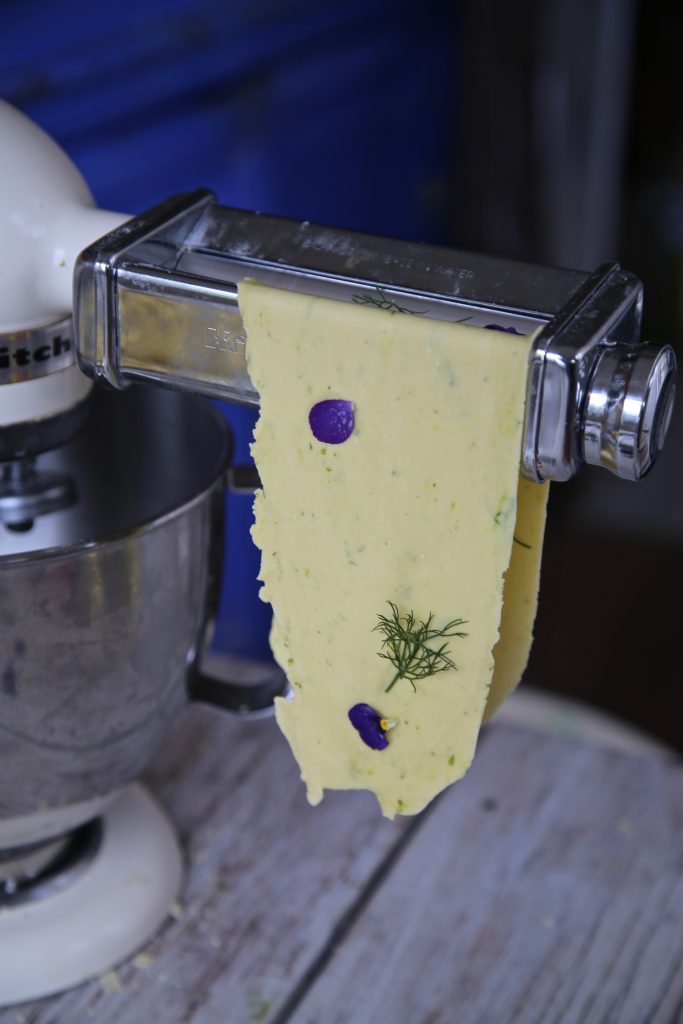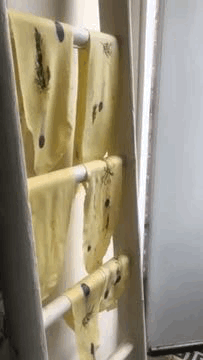We think of Italy as the land of pasta and tomato sauce. However pasta was a feast day dish, requiring time and many hands, until industrialised dried pasta was invented, which transformed it into an easy, readily available ingredient.
Tomato sauce, likewise, is a recent habit- 19th century. Discovered in Central America, and exported to the old world, Europe, at first they were considered inedible and possibly poisonous. Tomato plants were decorative exotic plants. Modern tomatoes have been bred to be sweeter and less acidic.
I don’t often make fresh pasta, for in my mind it’s a time-consuming pfaff. In reality, it isn’t, especially once you’ve had some practice. It helps to have:
- The right flour: 00 pasta flour. Italian flour is rated by the grind rather than the strength of the gluten: 00 refers to a very fine grind, similar to sponge or cake flour.
- A food processor, which, if you follow my ‘couscous’ method below, produces perfect texture, not too wet or dry, pasta every time.
- A pasta roller. I had a hand cranked pasta machine which is fine for making small batches, but when I had to make tortellini for 30 people, I though my arm was going to drop off. It’s hard work. Now I use a pasta attachment for my food mixer and that makes things very easy.
You can add spinach for green pasta, beetroot for purple and squid ink for black. But a pretty and spring-like touch is to add edible flowers and herbs to the dough.
Note to self: make fresh pasta more often.
Fresh pasta fettuccini with edible flowers
Ingredients
- 400 g 00 pasta flour
- 3 medium eggs
- 1 egg yolk
- 1 tbsp sea salt
- handful edible flowers/herbs
- Olive oil or butter to dress the pasta and prevent sticking once drained
Pesto sauce
- large bunch basil leaves, stalks removed
- 50 g parmesan or pecorino, finely grated
- 1 clove garlic, peeled
- 150 ml olive oil
- 1/2 lemon
- 1 tsp sea salt
- 30 g pine nuts
Instructions
For the fresh pasta by machine
- This is easiest using a food processor: combine all the ingredients in a food processor until the dough looks like large couscous. Then remove and knead by hand until you have a ball of dough. Wrap in clingfilm and leave to rest for one hour.
- Set up your pasta rolling machine. Cut off a 3cm slice of the pasta dough and keep the rest covered. The machine has settings, usually 1 to 8, whereby the dough is rolled thinner and thinner. Start on the widest setting, number one. Flatten one edge and feed into the machine. Then fold the tongue of pasta over and feed into the machine, the two edges first. Do this around 8 to 10 times, folding it in half each time. When the looped end starts to make a little popping sound, the pasta is ready to roll even thinner on setting number 2.
- Keep rolling the pasta thinner and thinner to setting number 5.If you want to add herbs and flowers this is the moment. This works better if you separate petals from the stamen and herbs from the stalks. Press them into the strips of pasta with your fingers then run it through number 5. Continue onto the thinnest setting, number 8.
For the fresh pasta by hand:
- By hand, put the flour in a heap onto a clean surface. Make a hole in the middle and add the eggs and salt. Fork the flour into the centre until you have a dough, not too wet, not too dry. Cover in clingfilm and leave to rest as above.
- Roll with a rolling pin as thinly as possible. Loosely roll up the pasta sheets and cut across in 1 cm strips with scissors to make coils of fettuccini. Add to the tray mentioned below.
- Add a few tbsps of semolina and flour to a tray.
- Using the fettuccini attachment, run the pasta through the machine, letting the pasta coil onto the tray.
To cook the pasta:
- Leave to dry for 30 to 60 minutes.
- Fill a large saucepan with boiling water and a tablespoon of sea salt.
- Cook the pasta in salty boiling water for 3 minutes then drain in a colander. (It’s better to slightly undercook the pasta, it will continue to cook while being drained and served).
- Add olive oil or butter to the pasta, to loosen it, then add your sauce.
- Decorate with edible flowers and herbs and serve while hot.
For the pesto sauce
- Blend or finely chop all the ingredients together, add the pine nuts at the end.
Notes









Leave a Reply